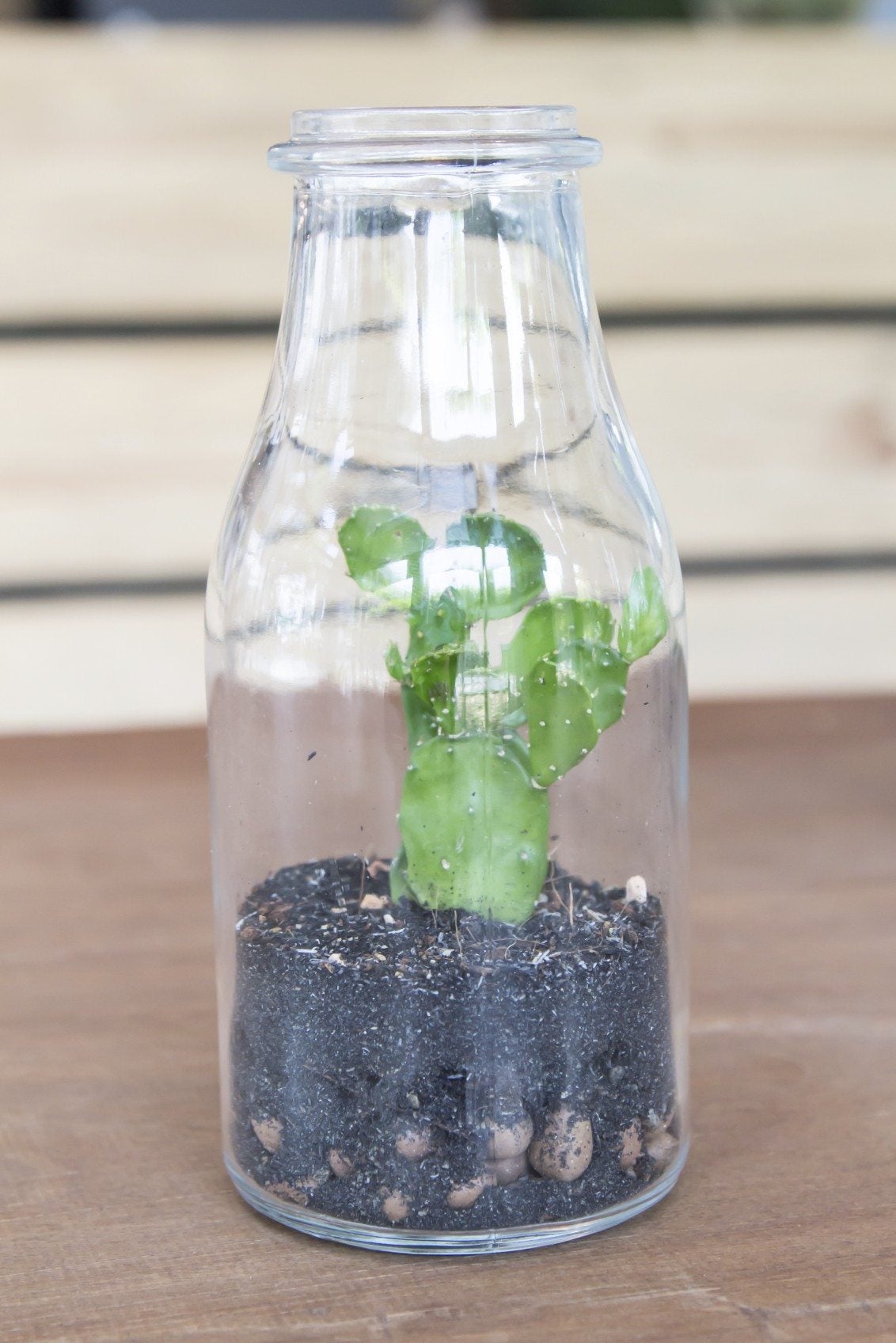Bottle Garden Plants – How To Create Gardens In A Bottle

Whether you are short on outdoor gardening space or just want an eye-catching indoor garden – glass bottle gardens are a carefree way to grow many of your favorite plants. Bottle gardens make excellent indoor focal points, especially when planted with colorful foliage and different textures. By following some basic tips, you will have your bottle garden planted and thriving in no time. Read on to learn more.
What is a Bottle Garden?
Gardens in a bottle are essentially the same thing as terrariums. Each one is a small greenhouse supporting a miniature ecosystem of plants. The first step in creating glass bottle gardens is selecting the bottle. Clear bottles allow the most sunlight to enter, so if you choose a colored bottle, you need to select plants that tolerate medium to low levels of light. Bottles with openings big enough to fit your hand through make planting easier. Otherwise, you will have to use chopsticks or a long-handled spoon to work the soil inside the bottle and plant. Just make sure the bottle opening is wide enough for the plants to fit through it. Likewise, you could opt for clear, plastic soda bottles and simply cut an opening for your plants to fit in. Glass jars work well too. Wash the inside and outside of the bottle and allow it to dry, as this removes any toxic substances that could harm the plants. Dry soil won’t stick to the sides of a dry bottle, and you can remove any dust from the sides when you water.
Creating Gardens in a Bottle
Bottle garden plants require porous soil. This both reduces rot and allows air to get to the roots. You can improve your soil’s drainage by adding one inch (2.5 cm.) of pea gravel to the bottom of the bottle and adding a small layer of horticultural charcoal on top. The charcoal reduces any sour smells created from decomposition. Layer the gravel mixture with 2 to 4 inches (5-10 cm.) of a rich potting mix. Spread the soil evenly over the gravel using a long-handled spoon. Using rich soil reduces or eliminates the need for fertilizing. Plant low growing plants first, working your way up to the tallest. If it’s difficult to fit the remaining plants into position, wrap them in a paper funnel and slip them through the bottle’s opening and into position. Firm the soil around the plants. Spray the plants and soil with tepid water until they are moist. Only water again when the soil becomes dry, or the plants start wilting. Place the bottle out of direct sunlight. Leave the bottle top open for several weeks to reduce condensation and then seal it with a cork or suitable top. The only other maintenance is removing dead foliage before it rots.
Suitable Plants for a Bottle Garden
Low growing tropical vegetation makes good bottle garden plants because they thrive in humid conditions. Be sure to use plants with similar needs. Suitable choices include:
Flowering plants don’t grow well in bottle gardens, as the excess moisture can rot the blossoms. Joyce Starr has owned and operated a landscape design and consulting business for 25 years. She is a previously certified horticulture professional and lifelong gardener, sharing her passion for all things green through her writing.
Sign up for the Gardening Know How newsletter today and receive a free copy of our e-book "How to Grow Delicious Tomatoes".